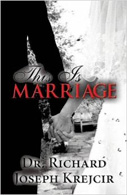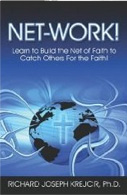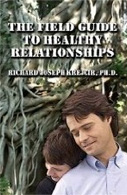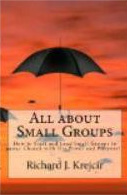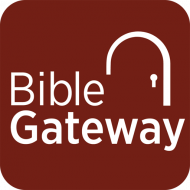Manuscript Evidence for the New Testament
There are more than 24,000 partial and complete manuscript copies of the New Testament. These manuscript copies are very ancient and they are available for inspection now.
There are also some 86,000 quotations from the early church fathers and several thousand Lectionaries (church-service books containing Scripture quotations used in the early centuries of Christianity).
Bottom line: the New Testament has an overwhelming amount of evidence supporting its reliability.
The Variants in the New Testament Manuscripts Are Minimal
In the many thousands of manuscript copies we possess of the New Testament, scholars have discovered that there are some 150,000 "variants." This may seem like a staggering figure to the uninformed mind. But to those who study the issue, the numbers are not so damning as it may initially appear.
Indeed, a look at the hard evidence shows that the New Testament manuscripts are amazingly accurate and trustworthy. To begin, we must emphasize that out of these 150,000 variants, 99 percent hold virtually no significance whatsoever.
Many of these variants simply involve a missing letter in a word; some involve reversing the order of two words (such as "Christ Jesus" instead of "Jesus Christ"); some may involve the absence of one or more insignificant words.
Really, when all the facts are put on the table, only about 50 of the variants have any real significance - and even then, no doctrine of the Christian faith or any moral commandment is effected by them.
For more than ninety-nine percent of the cases the original text can be reconstructed to a practical certainty.
Even in the few cases where some perplexity remains, this does not impinge on the meaning of Scripture to the point of clouding a tenet of the faith or a mandate of life. Thus, in the Bible as we have it (and as it is conveyed to us through faithful translations) we do have for practical purposes the very Word of God, inasmuch as the manuscripts do convey to us the complete vital truth of the originals.
By practicing the science of textual criticism - comparing all the available manuscripts with each other - we can come to an assurance regarding what the original document must have said. Let us suppose we have five manuscript copies of an original document that no longer exists. Each of the manuscript copies are different. Our goal is to compare the manuscript copies and ascertain what the original must have said. Here are the five copies:
Manuscript #1: Jesus Christ is the Savior of the whole worl.
Manuscript #2: Christ Jesus is the Savior of the whole world.
Manuscript #3: Jesus Christ s the Savior of the whole world.
Manuscript #4: Jesus Christ is th Savior of the whle world.
Manuscript #5: Jesus Christ is the Savor of the whole wrld.
Could you, by comparing the manuscript copies, ascertain what the original document said with a high degree of certainty that you are correct? Of course you could.
This illustration may be extremely simplistic, but a great majority of the 150,000 variants are solved by the above methodology.
By comparing the various manuscripts, all of which contain very minor differences like the above, it becomes fairly clear what the original must have said. Most of the manuscript variations concern matters of spelling, word order, tenses, and the like; no single doctrine is affected by them in any way.
We must also emphasize that the sheer volume of manuscripts we possess greatly narrows the margin of doubt regarding what the original biblical document said.
If the number of [manuscripts] increases the number of scribal errors, it increases proportionately the means of correcting such errors, so that the margin of doubt left in the process of recovering the exact original wording is not so large as might be feared; it is in truth remarkably small.
The New Testament Versus Other Ancient Books
By comparing the manuscript support for the Bible with manuscript support for other ancient documents and books, it becomes overwhelmingly clear that no other ancient piece of literature can stand up to the Bible. Manuscript support for the Bible is unparalleled! There are more [New Testament] manuscripts copied with greater accuracy and earlier dating than for any secular classic from antiquity.
Rene Pache adds, "The historical books of antiquity have a documentation infinitely less solid."
Dr. Benjamin Warfield concludes, "If we compare the present state of the text of the New Testament with that of no matter what other ancient work, we must...declare it marvelously exact." Norman Geisler makes several key observations for our consideration: No other book is even a close second to the Bible on either the number or early dating of the copies. The average secular work from antiquity survives on only a handful of manuscripts; the New Testament boasts thousands.
The average gap between the original composition and the earliest copy is over 1,000 years for other books.
The New Testament, however, has a fragment within one generation from its original composition, whole books within about 100 years from the time of the autograph [original manuscript], most of the New Testament in less than 200 years, and the entire New Testament within 250 years from the date of its completion.
The degree of accuracy of the copies is greater for the New Testament than for other books that can be compared. Most books do not survive with enough manuscripts that make comparison possible.
From this documentary evidence, then, it is clear that the New Testament writings are superior to comparable ancient writings. "The records for the New Testament are vastly more abundant, clearly more ancient, and considerably more accurate in their text."
Support for the New Testament from the Church Fathers
As noted at the beginning of this chapter, in addition to the many thousands of New Testament manuscripts, there are over 86,000 quotations of the New Testament in the early church fathers. There are also New Testament quotations in thousands of early church Lectionaries (worship books).
There are enough quotations from the early church fathers that even if we did not have a single copy of the Bible, scholars could still reconstruct all but 11 verses of the entire New Testament from material written within 150 to 200 years from the time of Christ.
Manuscript Evidence for the Old Testament
The Dead Sea Scrolls prove the accuracy of the transmission of the Bible.
In fact, in these scrolls discovered at Qumran in 1947, we have Old Testament manuscripts that date about a thousand years earlier (150 B.C.) than the other Old Testament manuscripts then in our possession (which dated to A.D. 900).
The significant thing is that when one compares the two sets of manuscripts, it is clear that they are essentially the same, with very few changes.
The fact that manuscripts separated by a thousand years are essentially the same indicates the incredible accuracy of the Old Testament's manuscript transmission. A full copy of the Book of Isaiah was discovered at Qumran. Even though the two copies of Isaiah discovered in Qumran Cave 1 near the Dead Sea in 1947 were a thousand years earlier than the oldest dated manuscript previously known (A.D. 980), they proved to be word for word identical with our standard Hebrew Bible in more than 95 percent of the text.
The 5 percent of variation consisted chiefly of obvious slips of the pen and variations in spelling." From manuscript discoveries like the Dead Sea Scrolls, Christians have undeniable evidence that today's Old Testament Scripture, for all practical purposes, is exactly the same as it was when originally inspired by God and recorded in the Bible.
Combine this with the massive amount of manuscript evidence we have for the New Testament, and it is clear that the Christian Bible is a trustworthy and reliable book.
The Dead Sea Scrolls prove that the copyists of biblical manuscripts took great care in going about their work. These copyists knew they were duplicating God's Word, so they went to incredible lengths to prevent error from creeping into their work.
The scribes carefully counted every line, word, syllable, and letter to ensure accuracy.
God's Preservation of the Bible
The Westminster Confession declares: "The Old Testament in Hebrew and the New Testament in Greek, being immediately inspired by God and, by His singular care and providence kept pure in all ages, are therefore authentical; so in all controversies of religion, the Church is finally to appeal unto them."
The Westminster Confession makes a very important point here.
The fact is, the God who had the power and sovereign control to inspire the Scriptures in the first place is surely going to continue to exercise His power and sovereign control in the preservation of Scripture. Actually, God's preservational work is illustrated in the text of the Bible. By examining how Christ viewed the Old Testament, we see that He had full confidence that the Scriptures He used had been faithfully preserved through the centuries.
Because Christ raised no doubts about the adequacy of the Scripture as His contemporaries knew them, we can safely assume that the first-century text of the Old Testament was a wholly adequate representation of the divine word originally given.
Jesus regarded the extant copies of His day as so approximate to the originals in their message that He appealed to those copies as authoritative.
The respect that Jesus and His apostles held for the extant Old Testament text is, at base, an expression of the confidence in God's providential preservation of the copies and translations as substantially identical with the inspired originals.
Hence, the Bible itself indicates that copies can faithfully reflect the original text and therefore function authoritatively.
The above article is an example of the quality materials produced by Reasoning from the Scriptures Ministries. Write us for a full listing of other available free resources:
Reasoning from the Scriptures Ministries http://home.earthlink.net/~ronrhodes/
P.O. Box 80087
Rancho Santa Margarita, CA 92688





